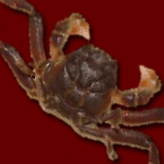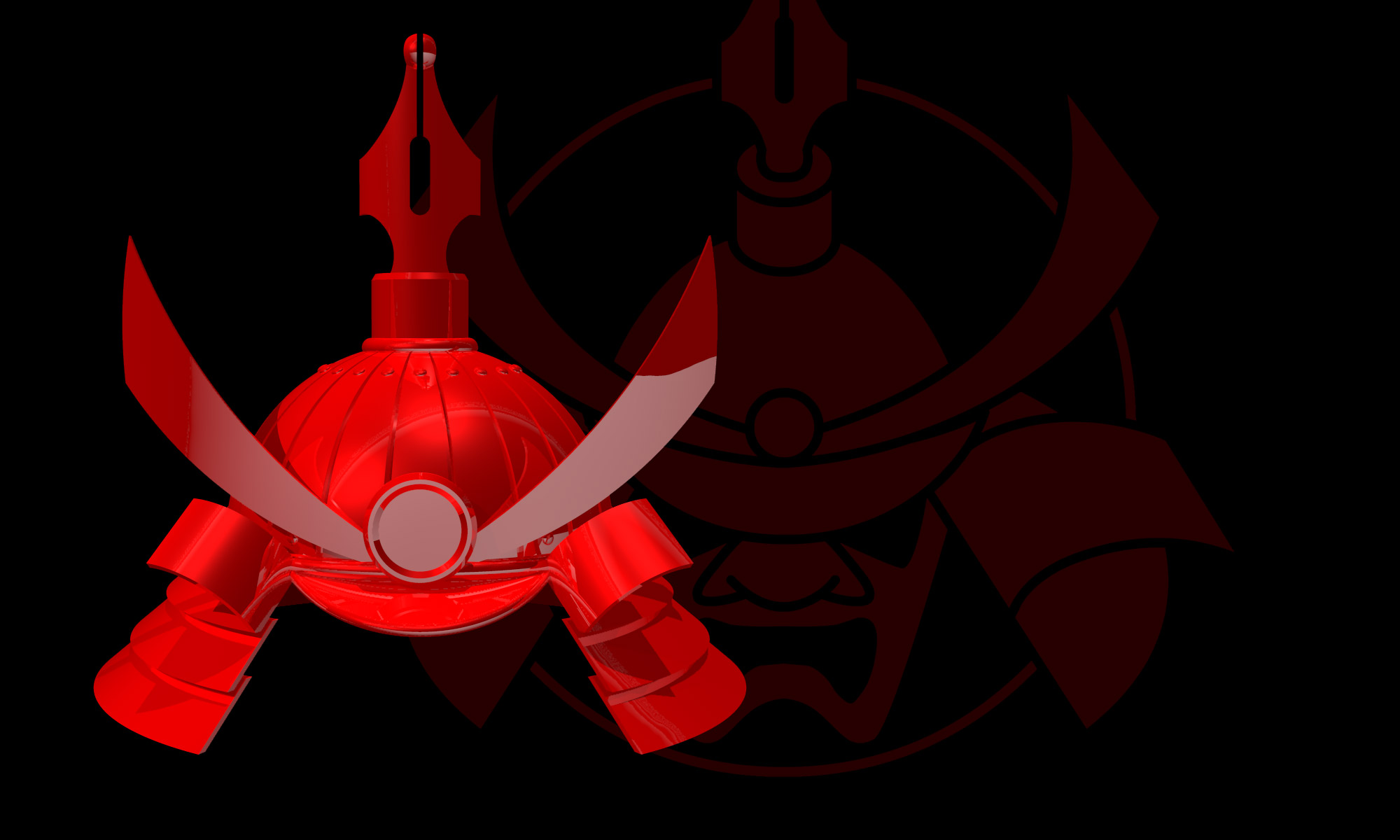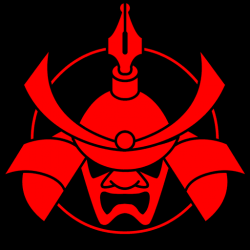On page 43 of the book, there's the curious tale of a ninja who escaped from the battle of Dannoura in 1185 by strapping his feet to a pair of crabs with kelp twine, and scuttling away. Consequently, the crabs of Shimonseki to this day bear an invisible ninja footprint on their shells.
Um . . .
Well it's a quirky story and the footprint bit is hard to disprove. But, as ever with Fudebakudo and the martial arts, there's another version of the story. This one is slightly better known than the ninja one, but it, too, is not quite as straightforward as it seems.
The fact is that there was a sea-battle at Dannoura in 1185. It was a bloody affair resulting in the defeat of the Taira clan. The grandmother of the six-year old boy Emperor Antoku jumped to her death, taking the boy with her to her watery grave, when it was clear that the battle was lost. To this day, the crabs of the area have on their shells the faces of samurai warriors, the drowned souls that were lost beneath the waves reincarnated as crustaceans.

Ooh! Spooky! And yet . . . almost true — because the thing about this story is that the crabs do indeed display a ghostly samurai face (note that "ghostly" here affords some artistic license, and you have to scrunch your eyes up a bit, but hey). They are called Heike crabs (Heike is another reading of the Taira kanji) and there's an intriguing explanation for how this has come to be. The samurai crabs are, the theory goes, an exquisite example of artificial natural selection.
The key fact is that the crabs have patterned shells, some of which look a bit like a samurai face and some of which do not. Fishermen catching the crabs in the sea where the legendary battle took place would be inclined to throw back the ones that seemed to be reincarnated warriors (it's never wise to antagonise departed souls, especially those of warriors), whilst keeping the ones that had no such pattern. In this way, over the centuries, the stock of crabs with a samurai pattern on their backs is reinforced by breeding, while those that fail to carry the mark are removed from the gene pool.
Neat, eh?
It's a wonderful idea, and it was popularised by the late, great Carl Sagan. But, sadly, it doesn't quite cut the mustard (or Thousand Island Dressing). The explanation of artificial selection works best if you imagine crabs the size of dinner plates, or, at least, big enough for half a crab sandwich. Unfortunately the Heike crabs are on the small end of the crabby scale (an inch across, or thereabouts) and it's not such a convincing theory if you consider that nobody bothers eating crabs that small; they probably all get thrown back. Unless, of course, the seagulls of Shimonoseki are more selective than people realise.

